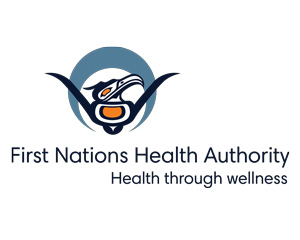Non-medical (homemade) masks are one tool that can be used by First Nations community members and the general public during the COVID-19 pandemic. Homemade masks are recommended for use in situations where you cannot physically distance yourself from others, like at the grocery store.
Physical distancing, hand washing and staying home when you are sick are all more effective and more important than wearing a mask. But face masks can play an important role when physical distancing is difficult to maintain.
What You Need to Know
• Homemade masks can provide some protection to others
around you when physical distancing is difficult to maintain, like when you’re
inside grocery stores or on public transit.
• Some people with COVID-19 can spread the virus before
they develop symptoms. Therefore, wearing a mask helps to keep those around you
safe, even if you have no symptoms or only mild symptoms.
• Homemade masks have not been proven to protect the person wearing the mask.
• Everyone needs to follow good mask etiquette to benefit from wearing a mask. This includes:
o Washing hands before putting on and taking off the mask
o Never touching or adjusting the mask without immediately cleaning your hands after
o Not re-using a mask once you have put it on and not sharing your mask,
o Not touching your face mask while using it,
o Ensuring your mask fits well, and
o Storing used masks safely until they can be properly washed.
• Note: non-medical masks alone will not prevent the spread of COVID-19. Everyone must consistently and strictly adhere to good hygiene and public health measures, including frequent hand washing and physical distancing.
Washing and Disposing of Your Face Mask

Face masks can become contaminated on the outside or when touched by your hands. When wearing a mask, take the following precautions to protect yourself:
• Change a cloth mask for a fresh one as soon as it gets damp or soiled.
• Put masks directly into the washing machine or a bag that can be emptied into the washing machine and then disposed of.
• Cloth face masks can be laundered with other items using a hot cycle and then dried thoroughly.
• Non-medical face masks that cannot be washed should be discarded and replaced as soon as they get damp, soiled or crumpled.
• Dispose of masks properly in a lined garbage bin.
What Should I Look For in a Homemade Mask?• Homemade masks should have at least three layers to make sure that droplets don’t pass through the fabric. The most important thing is having these three layers with a mask that fits well.
• A properly fitted mask sits closely over the mouth, nose, cheeks and chin of the person wearing it. The mask will be less effective if the shape or the material has gaps in it because it will allow droplets to pass through.
Non-medical face masks should not be placed on:• Children under the age of two,
• Anyone who has trouble breathing, or
• Anyone who is unconscious, incapacitated or otherwise unable to remove the mask without assistance.
Resources
• Learn more about making homemade masks from the Public Health Agency of Canada: Non-medical masks and face coverings: Sew and no-sew instructions
• Learn more about face masks from the BCCDC (Masks)
• Learn more about COVID-19 prevention and risks from the Government of Canada (Coronavirus disease (COVID-19): Prevention and risks)
Downloadable Resource: Download this info in PDF format.

